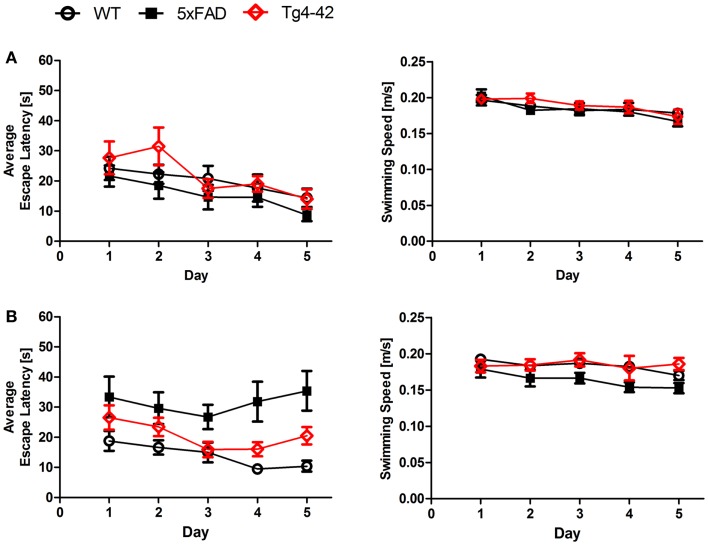Figure 1.
Spatial learning deficits in aged Tg4–42 and 5XFAD shown in the acquisition training of the Morris water maze. Female (A) young and (B) aged Tg4–42 mice, 5XFAD mice, and WT littermate controls were tested (n = 8–11). Animals tested underwent acquisition training to learn to use distal and proximal cues to navigate a direct path to a hidden platform. Escape latencies of young mice (A) decreased progressively over 5 days of training regardless of the genotype. Furthermore, aged WT mice (B) showed a progressive improvement in the escape latency over time. The escape latencies for aged Tg4–42 and 5XFAD did not improve over the 5 days of training. Swimming speed was not affected in all mice tested. Escape latency and swimming speed: repeated measures ANOVA followed by Bonferroni multiple comparisons. m age in months.

